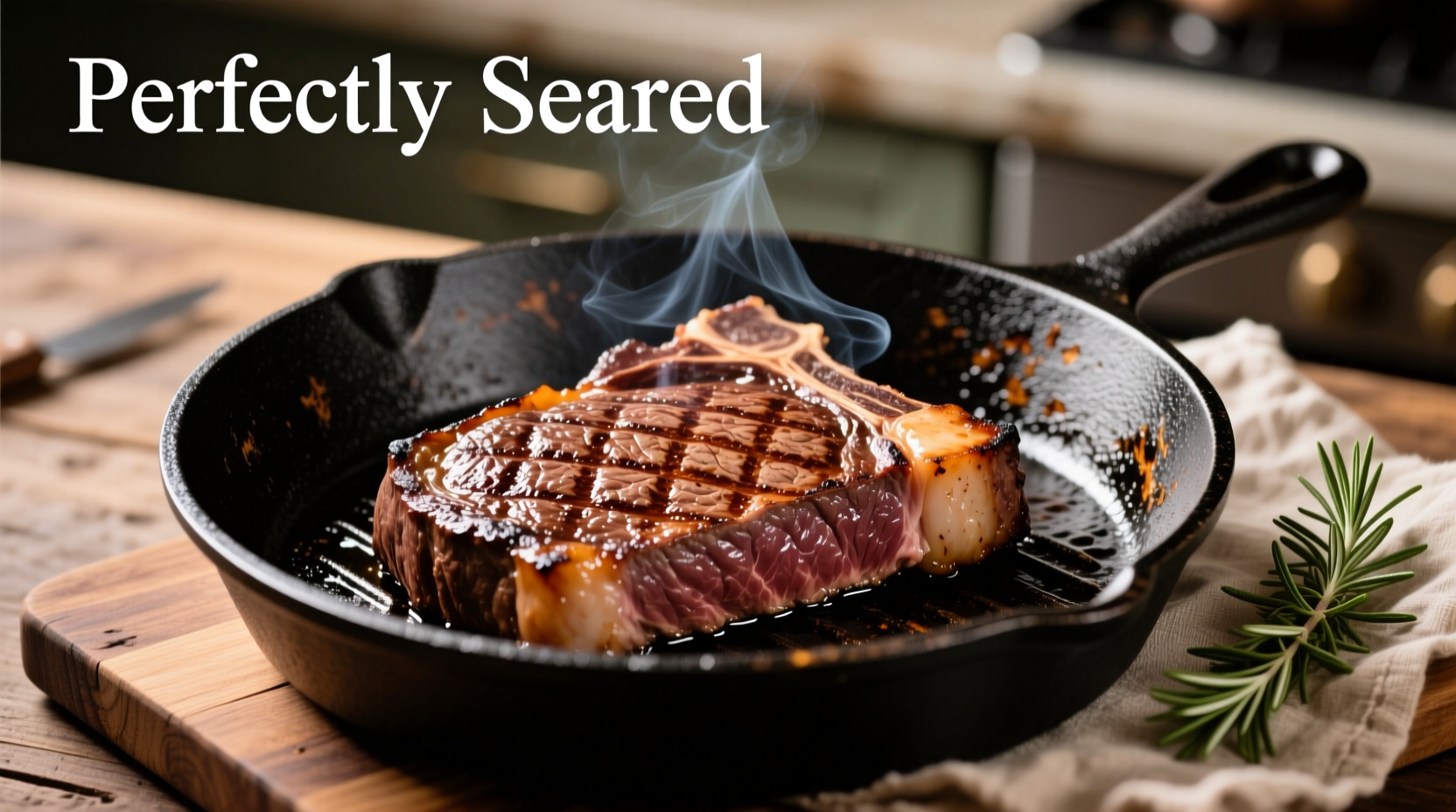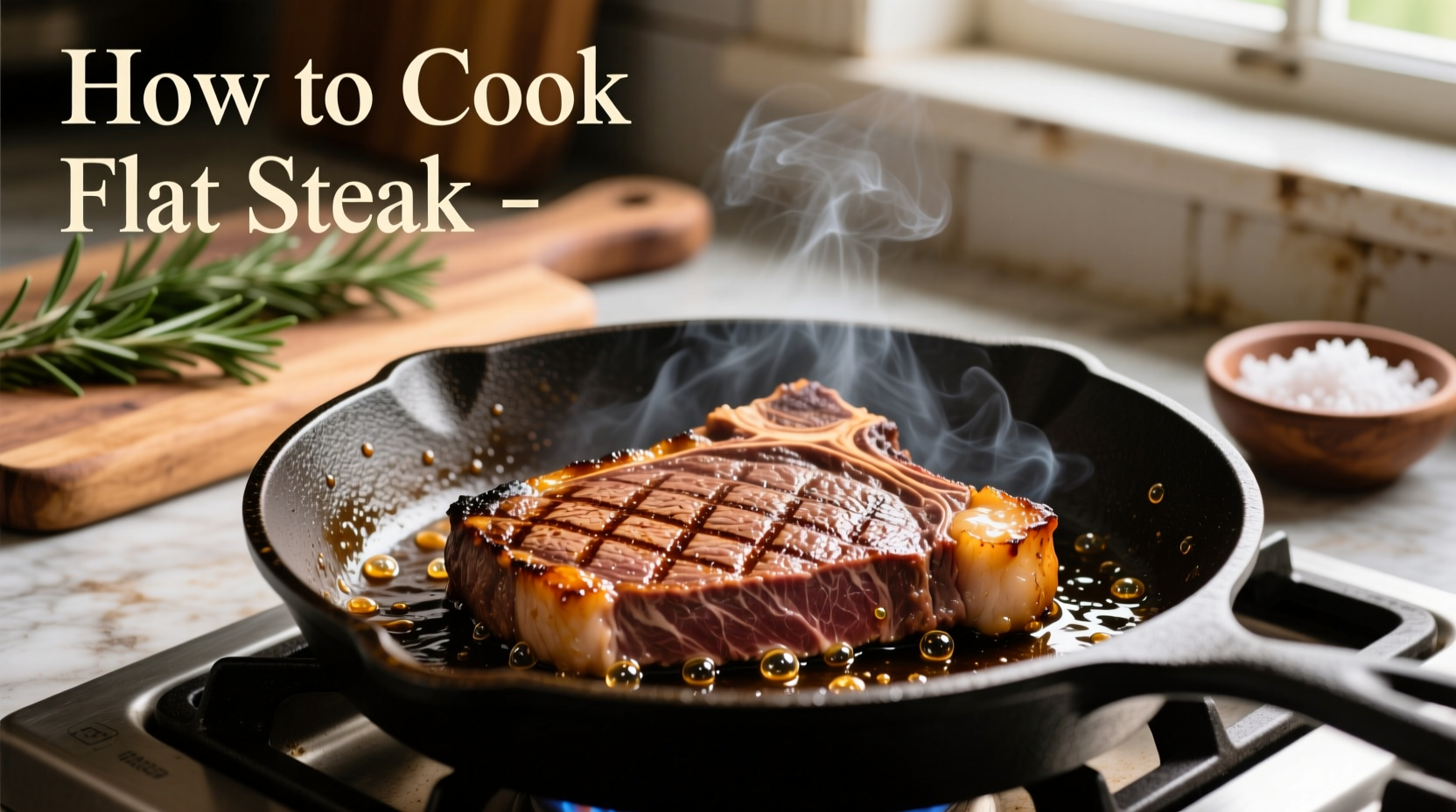Perfectly cooked flat steak features a crispy sear, juicy interior, and tender texture achieved through proper temperature control, resting time, and slicing technique. This guide delivers precise cooking methods, temperature guidelines, and professional tips for flawless results every time.
What Exactly Is Flat Steak?
"Flat steak" typically refers to flat iron steak, cut from the shoulder (chuck) region of the cow. Known scientifically as the infraspinatus muscle, this cut gained popularity after butchers discovered how to remove the central connective tissue. According to the Beef Research Council, flat iron steak ranks as the second most tender cut after tenderloin when properly prepared.
| Cut | Tenderness Rating | Best Cooking Method |
|---|---|---|
| Tenderloin | 10/10 | Quick sear |
| Flat Iron | 9/10 | High-heat sear |
| Sirloin | 7/10 | Grill or broil |
| Skirt | 6/10 | Quick high-heat |
Preparation: The Critical First Steps
Remove your flat steak from refrigeration 30-45 minutes before cooking. This crucial step, verified by National Center for Home Food Preservation research, allows even temperature distribution for consistent cooking. Pat the surface completely dry with paper towels—moisture prevents proper searing. Season generously with coarse salt (1 teaspoon per pound) and freshly ground black pepper.

Cooking Methods Compared
Two methods deliver exceptional results for flat steak:
Cast Iron Skillet Method
- Preheat skillet over medium-high heat for 5 minutes
- Add high smoke-point oil (avocado or grapeseed)
- Place steak in hot skillet, pressing gently for full contact
- Cook 3-4 minutes per side for medium-rare (130-135°F)
- Add butter, garlic, and herbs during last 2 minutes
Grill Method
- Create two-zone fire (direct and indirect heat)
- Sear over direct heat 2-3 minutes per side
- Move to indirect heat until reaching target temperature
- Use lid to control heat during finishing
Temperature Guide: Science-Based Doneness
Food science research confirms that the Maillard reaction (browning) occurs optimally between 285-325°F. For perfect flat steak:
- Rare: 120-125°F (bright red center) - 2-3 minutes per side
- Medium-rare: 130-135°F (warm red center) - 3-4 minutes per side
- Medium: 140-145°F (pink center) - 4-5 minutes per side
- Medium-well: 150-155°F (slight pink) - 5-6 minutes per side
USDA Food Safety and Inspection Service recommends a minimum internal temperature of 145°F for whole muscle cuts like flat steak, followed by a 3-minute rest period for food safety.
Resting and Slicing: The Final Crucial Steps
Rest your cooked flat steak for 5-7 minutes—this allows juices to redistribute. According to culinary research from the Texas Food Research Institute, skipping this step causes up to 30% more juice loss when slicing. Always slice against the grain at a 45-degree angle in ¼-inch thick pieces for maximum tenderness.
Common Mistakes to Avoid
- Moving steak too soon: Wait until it releases naturally from the cooking surface
- Overcrowding the pan: Cook one steak at a time for proper sear development
- Cutting too soon: Resting time is non-negotiable for juicy results
- Guessing doneness: Always use an instant-read thermometer
Flavor Pairing Suggestions
Flat steak's rich beefiness pairs beautifully with:
- Compound butter with garlic and herbs
- Red wine reduction sauces
- Charred seasonal vegetables
- Horseradish cream for contrast
Storage and Reheating Tips
Store leftovers in airtight containers for up to 3 days. For best reheating results, slice cold steak and warm in a covered skillet over low heat with a tablespoon of broth, turning occasionally until heated through—this prevents overcooking the exterior while warming the interior.











 浙公网安备
33010002000092号
浙公网安备
33010002000092号 浙B2-20120091-4
浙B2-20120091-4